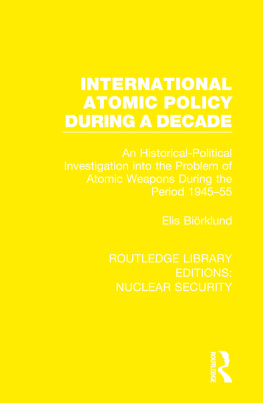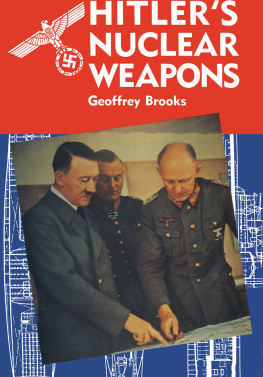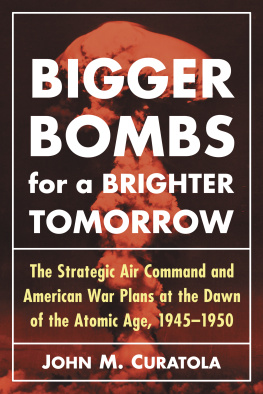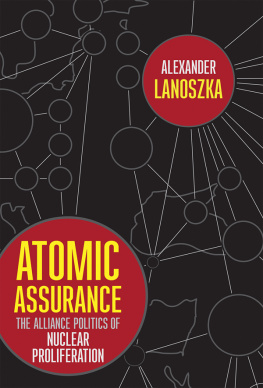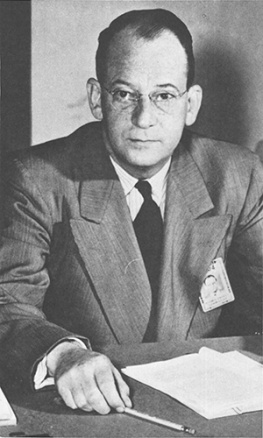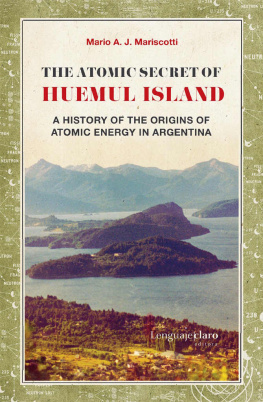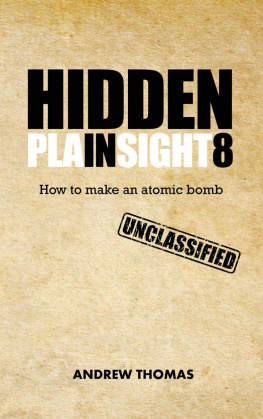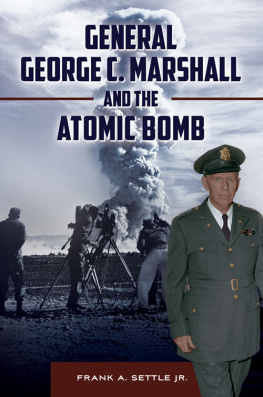First published in 1956 by George Allen & Unwin Ltd
This edition first published in 2021
by Routledge
2 Park Square, Milton Park, Abingdon, Oxon OX14 4RN
and by Routledge
52 Vanderbilt Avenue, New York, NY 10017
Routledge is an imprint of the Taylor & Francis Group, an informa business
1956 Admiral Elis Birklund
All rights reserved. No part of this book may be reprinted or reproduced or utilised in any form or by any electronic, mechanical, or other means, now known or hereafter invented, including photocopying and recording, or in any information storage or retrieval system, without permission in writing from the publishers.
Trademark notice: Product or corporate names may be trademarks or registered trademarks, and are used only for identification and explanation without intent to infringe.
British Library Cataloguing in Publication Data
A catalogue record for this book is available from the British
Library
ISBN: 978-0-367-50682-7 (Set)
ISBN: 978-1-00-309763-1 (Set) (ebk)
ISBN: 978-0-367-53797-5 (Volume 16) (hbk)
ISBN: 978-1-00-308337-5 (Volume 16) (ebk)
Publishers Note
The publisher has gone to great lengths to ensure the quality of this reprint but points out that some imperfections in the original copies may be apparent.
Disclaimer
The publisher has made every effort to trace copyright holders and would welcome correspondence from those they have been unable to trace.
FIRST PUBLISHED IN 1956
This book is copyright under the Berne Convention. Apart from any fair dealing for the purposes of private study, research, criticism or review, as permitted under the Copyright Act 1911, no portion may be reproduced by any process without written permission. Enquiry should be made to the publisher
Printed in Great Britain in 11 on 12 Monotype Baskerville type by The Shenval Press, Simson Shand Ltd., London, Hertford and Harlow.
In all countries it is agreed that one of the most serious and difficult problems in world affairs is the situation in which the development of atomic weapons has placed us. Where is it leading us? Is it possible to come to an acceptable solution, or must humanity be driven aimlessly along by newly discovered forces of nature towards a future filled with the fear of the destruction of civilization? These are the thoughts that occupy the minds of enlightened people, and throw a black shadow of pessimism over the future.
During my military career I took part in the great disarmament conferences of the 1920s and 30s, and having a knowledge of English, French, German and Russian, I became deeply interested in the political problems lying on the boundary between the foreign policies of the great powers and the upper strata of military-strategic conceptions. A study of world literature deepened my interest in this border area, which is so seldom touched upon in literature, and a number of articles were published, particularly on the relatively unknown Soviet Union, a country that I have studied for the past forty years or so. But atomic problems began to occupy a greater part of the discussion of the reduction of tension, further complicated by the political situationextremely involved even before the advent of atomic problemsand inspired me to study the atomic question.
It is already several years since I came to the conclusion that the political antagonism between a democratic way of life and the theory of Soviet-Communism is so great that tension can only be reduced in stages as mutual mistrust is diminished. I have never had any confidence in the argument that military disarmament could be achieved in order to attain in this way a reduction of tension. On the contrary, experience has shown that a reduction of political stress is a necessary prelude to a decrease in armaments.
But the rapid development of atomic weapons made the problem still more complicated and seemingly impossible to solve. In spite of that, I felt an inner urge to try to make some small contribution towards a solution of the great military-political problems of the world, about which I had long been writing articles. During 1954 articles were published in New York Times and Revue des deux Mondes.
I also began outlining the various solutions of the problems of the limitation of atomic weapons, international control and prohibition, which I was able to find out by the study of the reports of all the international conferences dealing with such matters (see ). This made necessary a special study of the question of control, and that led to an extensive investigation into how the worlds deposits of fissionable material, uranium and others, were distributed.
A table of the worlds uranium mines slowly took form (), and the map (Appendix 3), which should be opened out and consulted during the study of this book, was drawn. To establish permanent supervision of all these mines seemed to me quite impossible, and I was compelled to take the line of considerably reduced control, with suitable inspection.
An extensive study of the history of atomic policy, made with the support of Swedish State Council for Scientific Research, confirmed my conviction that if any results are to be attained at all, we must aim at a realistic result.
A draft of this book showed that it is impossible to give a clear picture of such a complicated series of problems without first giving a survey of the situation in the world at the different points of time when international conferences dealt with these questions, and it struck me that nowhere in literature had I found a valuable work which dealt with the problems of atomic weapons with regard to their inseparable connection with contemporary international events during the decade ending with the close of 1954. Such a work had therefore to be written.
Then, but only then, is it possible with any hope of success to study in detail the internal relationship of each separate groups of powers. For problems of atomic weapons look very different from different points of view.
In order that the reader will be able to understand the elementary, technical atomic problems, technical information about the position of science in the various stages of development must be given. This made necessary a study of atomic science, which has been checked by very prominent scientists and technical specialists. The richest sources were, of course, the American International Bibliography on Atomic Energy, which contains information on 1,500 sources of both political and social interest (1), while the technical parts (2) of the same publication contain over 40,000 sources. The work of sifting the source material, of studying about 4,000 books and of obtaining many hundreds from abroad has been great, and later experience showed that only about 200 of them were of sufficient value to justify of their being included in the list of valuable sources (). In addition a large number of periodicals, particularly from the USA and Russia, had to be consulted. Political memoirs and the like, on the other hand, have not been included in the list of sources, which would then have swelled out to an un-proportional degree.

